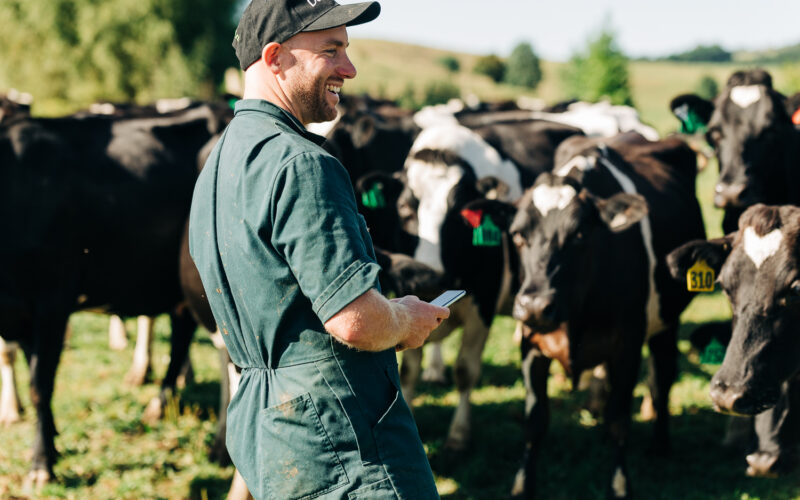Samantha Tennent, Farmers Weekly, 21-11-2022
A Waikato farmer received a wake-up call when he realised how many orange and red antibiotics he was using once the traffic light classification for antimicrobial use came into effect.
Andrew Lord milks 800 cows north of Cambridge in Te Pahu through two sheds on 200ha. He had been relying on drugs to battle mastitis but he never felt like he was making headway. The traffic light system was the catalyst to a completely different approach to managing mastitis on his farm.
 “We had a lot of mastitis and we were throwing drugs at a huge amount of cows, but many wouldn’t cure or they would have mastitis again not long after,” Lord says.
“We had a lot of mastitis and we were throwing drugs at a huge amount of cows, but many wouldn’t cure or they would have mastitis again not long after,” Lord says.
“We weren’t getting much return for the money we were spending.”
He sat down with his veterinarian, Mike Conlon from VE Vets, to see what else they could be doing to try to navigate it better and they enlisted the help of Steve Cranfield, a vet from AgriHealth.
“Steve is well-renowned as the mastitis guru, he helped us find a better way to deal with it which involved utilising Mastatest, which is a tool we have on farm to test a sample of milk from a cow with mastitis,” Lord says.
“The system emails me the results 21 hours later, before the hospital mob comes back in for milking.
“The results tell me the type of bacteria causing the mastitis and which type of drug might have a chance against that bacteria.
“It’s completely changed my perspective and we have completely overhauled how we treat mastitis.”
He has been utilising Mastatest for the past two and a half seasons on both of his farms and now every single mastitis case is tested before it receives any antibiotic treatment. Some results indicate that antibiotics will be ineffective so those animals are solely managed with anti-inflammatory pain relief to support their immune system to fight the infection.
“We make a point of using anti-inflammatories for all mastitis cases nowadays.
“There is solid scientific evidence that using pain relief gives a better return because the cow will recover faster and is more likely to get in calf.
“Cows are expected to keep eating, walking and milking, so it makes sense to support them with a bit of pain relief.”
He has found they are using next to no orange and red antibiotics now, with fewer repeat offenders.
Before being introduced to Mastatest, he was aware of the vet recommendation to get a milk sample cultured before treating the cow but he found the logistics of getting a sample to the clinic were near impossible.
“You’d need someone to be free to be able to run it in, then you’d have to wait for the results and that could take a few days, longer if it was later in the week when you sent the sample.
“And a lot of the time the results would say the sample was contaminated so it was a waste of time anyway, the traditional method just wasn’t a viable method for us and if something isn’t practical it just doesn’t happen.
“But Mastatest is very easy and having the results emailed straight to my phone is so efficient.”
He has also enjoyed the cost saving and worked out that the system paid for itself five times over in the first season he had it, from the reduced milk withholding and by not buying as many drugs.
And he connects with the big picture too, knowing there will be more and more pressure to reduce using antibiotics, in animals and people.
“Bacteria are getting less and less susceptible to antibiotics, we’ve certainly seen it in our results that the bacteria we have are a lot less susceptible to some of those common drugs, like cloxacillin, we used in the past.
“Just as everyone is talking about climate change now, reducing antibiotic usage will get more and more top of mind.”
He is a big advocate for the testing-before-treating method and promotes the value it can offer to help farmers combat their mastitis challenges.
“If you don’t know what you’re treating and what they’re susceptible to, you’re really just shooting in the dark. It’s certainly worth considering a different method, and it pays for itself pretty quickly.”
This article appeared in Farmers Weekly (NZ), and the original can be viewed here.
